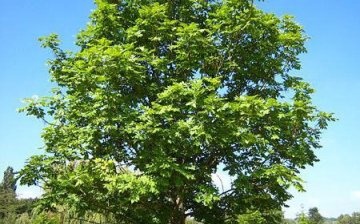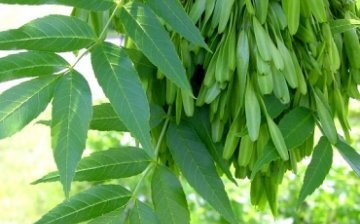Common ash - how to grow and what are its beneficial properties
Probably, in any city in Russia and not only in alleys, in parks, in yards and squares, you can find this large and tall tree - ordinary ash. Many, perhaps, simply do not know how it looks and how it differs from many other trees, therefore they are not able to identify it among the vegetation.
How to recognize an ash tree
You can distinguish ash from other trees by its feathery leaves: each leaf of this tree consists of seven or more individual leaves, which are located opposite each other on one cut. Ash begins to develop leaves only after the tree fades in spring.
Ash becomes even more noticeable and different from others during flowering. Inflorescences look like bundles of long reddish-claret stamens and are collected in several pieces. It is thanks to the cluster-like inflorescences that ash can be recognized and not confused with any other tree.
Flowering occurs in the month of April, after which leaves begin to bloom on the trees. Ash is most often found where the humidity is high and damp.
The nuances of growing
If you plan to plant an ash tree on your site, then prepare a bright place for the seedlings, where there is a lot of sun, but with well-moistened soil.
Ash is a hardy tree, it is well adapted to life in not particularly favorable conditions, therefore, in gas-polluted cities, it feels quite well.
To successfully grow this tree, you need to leave a distance of at least five meters between the seedlings when planting it and not plant them on saline soils. In order for the seedlings to take root faster, their root system must be well moistened and saturated with moisture before planting.
In the first four days after planting, you need to ensure regular watering.
Although ash prefers moist soils, good drainage is essential. And despite the love for moist soil, the tree is able to tolerate drought. But if the trees are still young, they must be provided with water during the dry period. In the spring - at the beginning and at the end - the ash needs fertilizing in the form of nitrogen fertilizers.
Ash does not tolerate pruning very well, so you should not get carried away with this. Only dry branches and spinning tops can be cut on trees.
Ash requires loosening the soil to a depth of about 25 cm and removing weeds around. It is recommended to pour fallen leaves under young trees closer to winter to insulate the root system.
If ordinary ash is grown as a standard tree, then for the winter the trunks of such trees will need to be insulated with one or two layers of burlap. This will need to be done in the first two to three years of tree formation, and with age, frost resistance is already increasing.
This tree grows quickly: in a year it can add about 40 cm in width, and grow by 50-60 cm in height. Mature trees reach a height of 20 meters, and their crown diameter can reach 16 meters!
The main pests of the ash tree are the ash-tree and bark beetle, and of the most common diseases that can affect trees, necrosis of the trunk and branches is noted. The rest of the tree is quite strong and hardy.
The benefits of ash
Almost every plant has beneficial properties. Ash is no exception and this tree has a lot of useful properties.
Ash raw materials have a strong astringent effect, therefore, hemostatic agents are made on its basis. In addition, in the case of ash, we can talk about good wound healing and antipyretic properties, relieving spasms and laxatives are made from it.
But that's not all! Ash-based medicines help expel worms from the body, treat coughs, and have a diuretic effect.
In the treatment of many diseases, decoctions, tinctures and preparations created using ash raw materials are used. Diseases of the kidneys, respiratory tract, sciatica and fevers are greatly alleviated and cured by ash.
Where and how to use the beneficial properties of ash
The medicinal properties of this tree make it possible to use its raw materials in the treatment of many diseases. For the treatment of each of them, their own recipe for preparing an infusion, a decoction from different parts of this tree is used.
Ash will help, in addition to the above-described diseases and in the treatment of gout, and inflammatory diseases of the female genital area. In addition, on the basis of ash, preparations are created that have a beneficial effect on the nervous system. Due to its astringent properties, ash is able to stop diarrhea, expel parasites from the body.
The properties of common ash are also known in increasing male potency and increasing sexual desire.
To remove excess fluid from the body with edema and the need for diuretics, tea made on the basis of ash raw materials is very often used.






